How you sell your online course affects how much profit you make, how many marketing options you have, and even how you create your course in the first place.
In this article we’ll look at your three main options:
- Use a digital downloads service to sell your online course
- Use an all-in-one platform for creating, marketing and selling your online course
- Do everything yourself with different tools
- What next?
1. Use a digital downloads service to sell your online course
Digital download services make selling digital products – like online courses – fairly simple. You upload your finished course to their platform, connect your preferred payment gateway (PayPal, Stripe, Apple Pay etc) and then embed a ‘buy now’ or ‘add to cart’ button on your website, or post a link on social media.
That’s it. Your students now can buy your course online and have the course automatically delivered to them.
Examples of digital download service
Advantages and disadvantages of digital delivery providers
Advantages:
- Simple to set up
- Affordable (SendOwl is from $15 a month or Gumroad is 5% of the sale price of your product plus a small charge fee)
- No limits on your course – you can have as many students, teachers and content types as you want
- Should help you sell more with features such as a conversion-optimised checkout, gifting, affiliate scheme, upsells, and so on
Disadvantages:
- They don’t give you any help creating your online course
- Their ‘sell more’ features can’t make up for a lack of marketing or authority on your part
- They usually work best if you already have something like a website that you can sell through and that gets traffic
What to look for with your digital delivery service
Although all digital delivery services will offer you similar basic functionality, they differ substantially in terms of what else they offer.
Before committing to a service, check whether they meet your needs.
Do you need help building a website or sales page?
Some of the digital delivery providers also help you build an online web presence. So if you are starting completely from scratch then this could be a good choice.
Selz, for example, helps you build an online store:
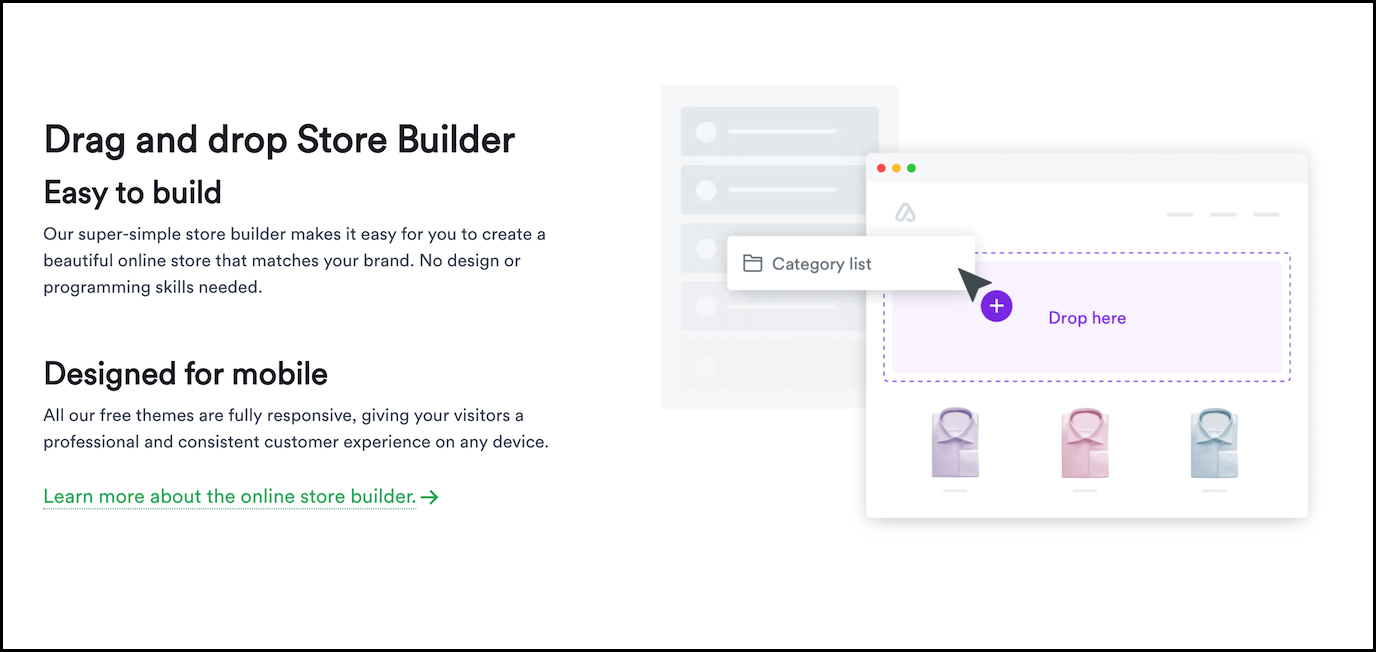
Do you need different pricing options?
All digital delivery providers should make it easy for you to sell your course for a specified amount. However, if you want to charge students per month or quarter, offer discounts, ask for payment over a few instalments, or incorporate ‘pay what you want’ pricing, you’ll need to choose carefully. Not all digital delivery providers support these options.
Do you want marketing help?
Digital delivery providers differ in how they help you with marketing. Some providers try and raise the profile of sellers by a ‘discover’ section on their site (although the effectiveness of this section probably varies). Others give you marketing tools that should help you sell more, like upsells, gifting, affiliate schemes, cart abandonment emails, and so on.
Gumroad, for example, promotes creators on their website:
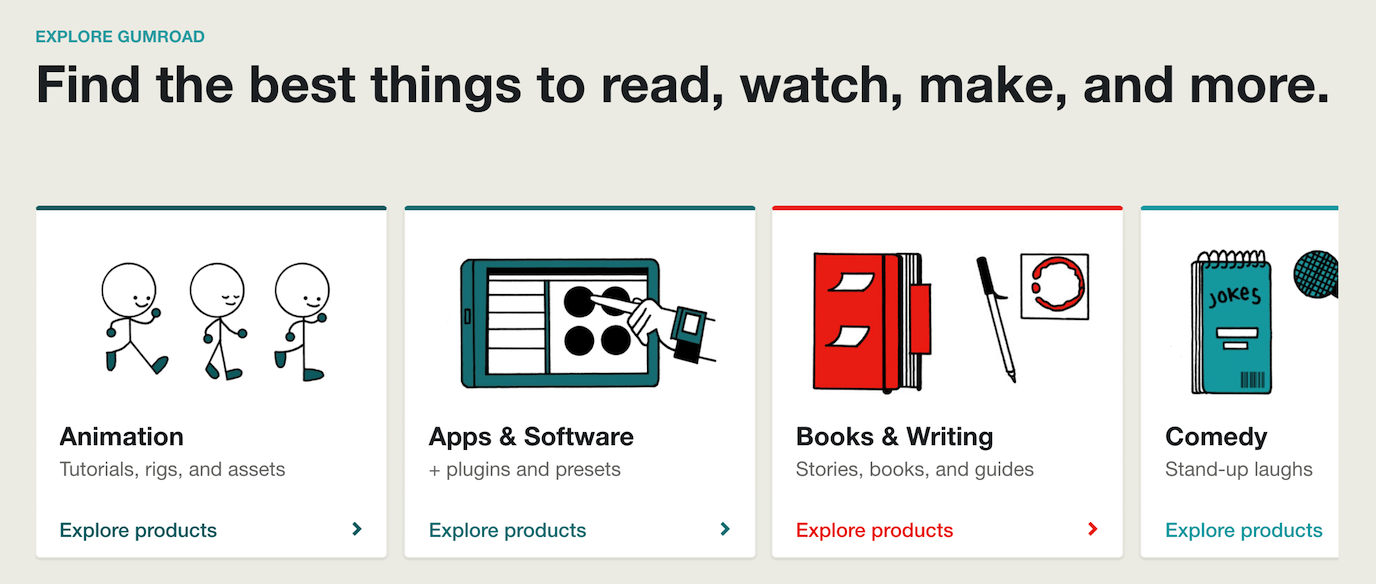
Do you want a customisable checkout?
You’ll make more sales if you have a conversion-optimised checkout that makes it as easy as possible for buyers to give you money. Some digital delivery providers offer a choice of checkout or customisation options. Many prefer to offer one type of checkout, which is optimised, to some degree.
SendOwl, for example, offers a choice of three checkouts. This is the ecommerce checkout:
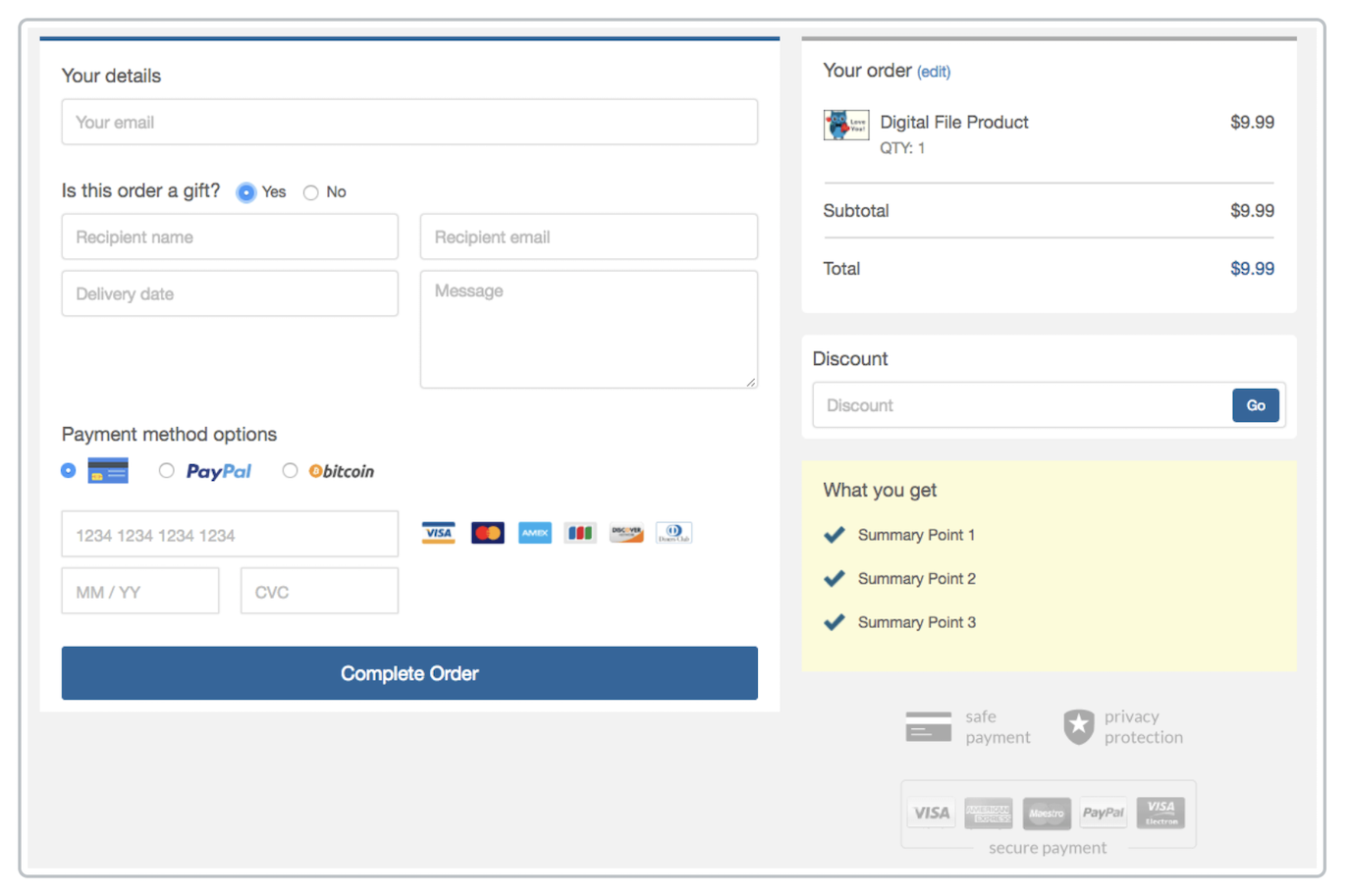
2. Use an all-in-one platform for creating, marketing and selling your online course
All-in-one online course platforms typically help you build, market and deliver your online course. They usually provide an effective way to go from idea to sale without having to use another platform or tool.
As a result of offering you so much functionality, some can feel inflexible. They are trying to do a lot of things at once so need to make trade-offs about what they do best.
Examples of all-in-one course builder platforms
- Teachable
- Thinkific
- Ruzuku
- Podia
- Kajabi
- Academy of Mine
- Coursecats - for WordPress
- LearnDash – for WordPress
Advantages and disadvantages of all-in-one-platforms
Advantages:
- Help with creating, marketing and selling your online course
- Usually cost more but offer you more help as well
- Can be a good option if you don’t have an established website or are struggling with marketing
- Can be a good option if you want to create and sell lots of courses and need powerful functionality
Disadvantages:
- Cost (although this varies)
- Restrictions on what your course looks like and how many students/teachers you can have
- Ties you in to doing everything on the platform when another tool might be better for selling your course, for example
What to look for with your all-in-platform
Although most all-in-one platforms offer you similar basic options in terms of creating, managing, marketing and delivering an online course, they differ widely in terms of functionality, cost, flexibility and customer service.
Pricing
Although using an all-in-one platform is usually more expensive than choosing a digital delivery provider, cost does vary enormously. Podia charges from $39 a month for their ‘Mover’ plan covering such options as your own storefront, webinars, email marketing and messaging.
In contrast, Academy of Mine starts at $9,997 a year and includes extensive functionality and 15-hours onboarding help.
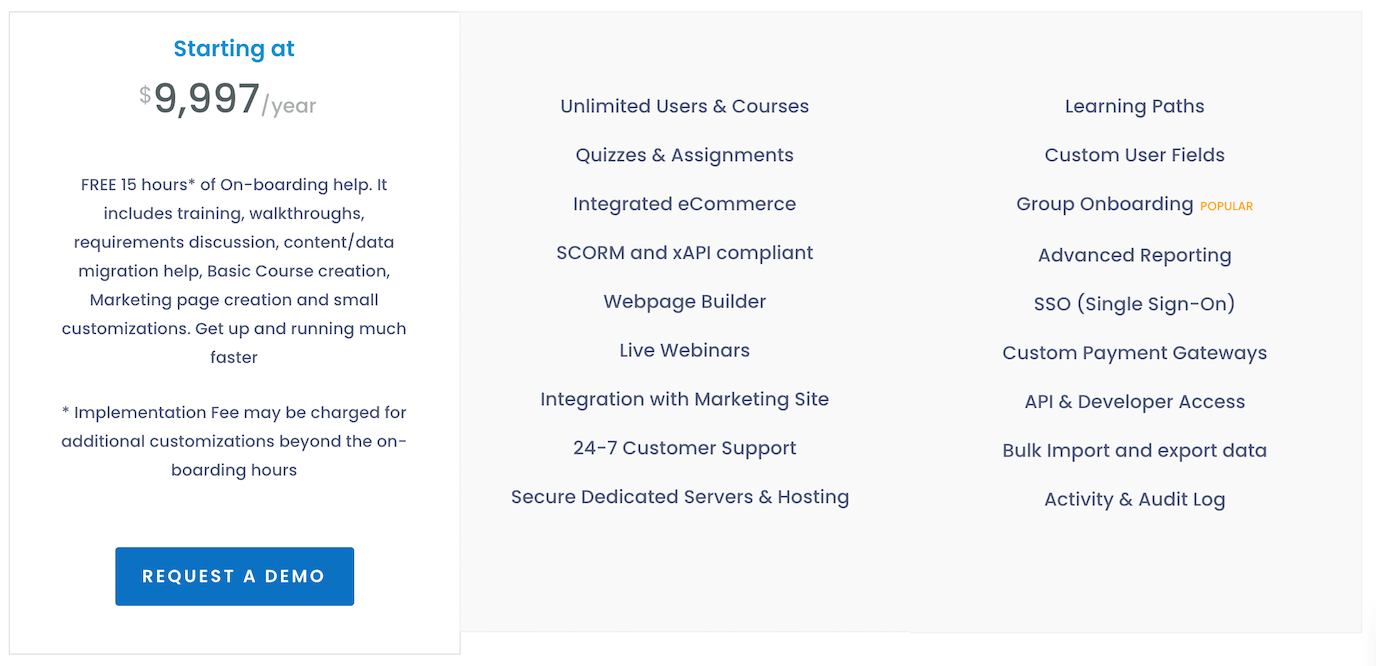
Ethos
All-in-one course platforms differentiate themselves in terms of who they are and what you can expect from them. For example, Kajabi is a well established platform and encourages you to see them as a reliable option: “We’ve spent the last 10 years helping over 50,000 business owners just like yourself create and sustain a successful business online.”
In contrast, Rukuku positions themselves as the fresh alternative to frustrating and inflexible course builders: “Now imagine if you could have a system that lets you run your course easily. And a team that’s going to support you every step of the way. We make it ridiculously easy to teach online.”

Flexibility and features
Some course creators like Coursecats and LearnDash only work with WordPress. Kajabi put limits on ‘contacts’ and ‘active members’ depending what pricing plan you are on, while Thinkific offers unlimited courses and students on their basic $39 a month plan.
In terms of features, there is substantial variation so you’ll need to decide what is important to you. For example, Ruzuku is good if you want a live element in your course, while Thinkific helps you create multi-media courses with video, quizzes, surveys, discussions and downloads.
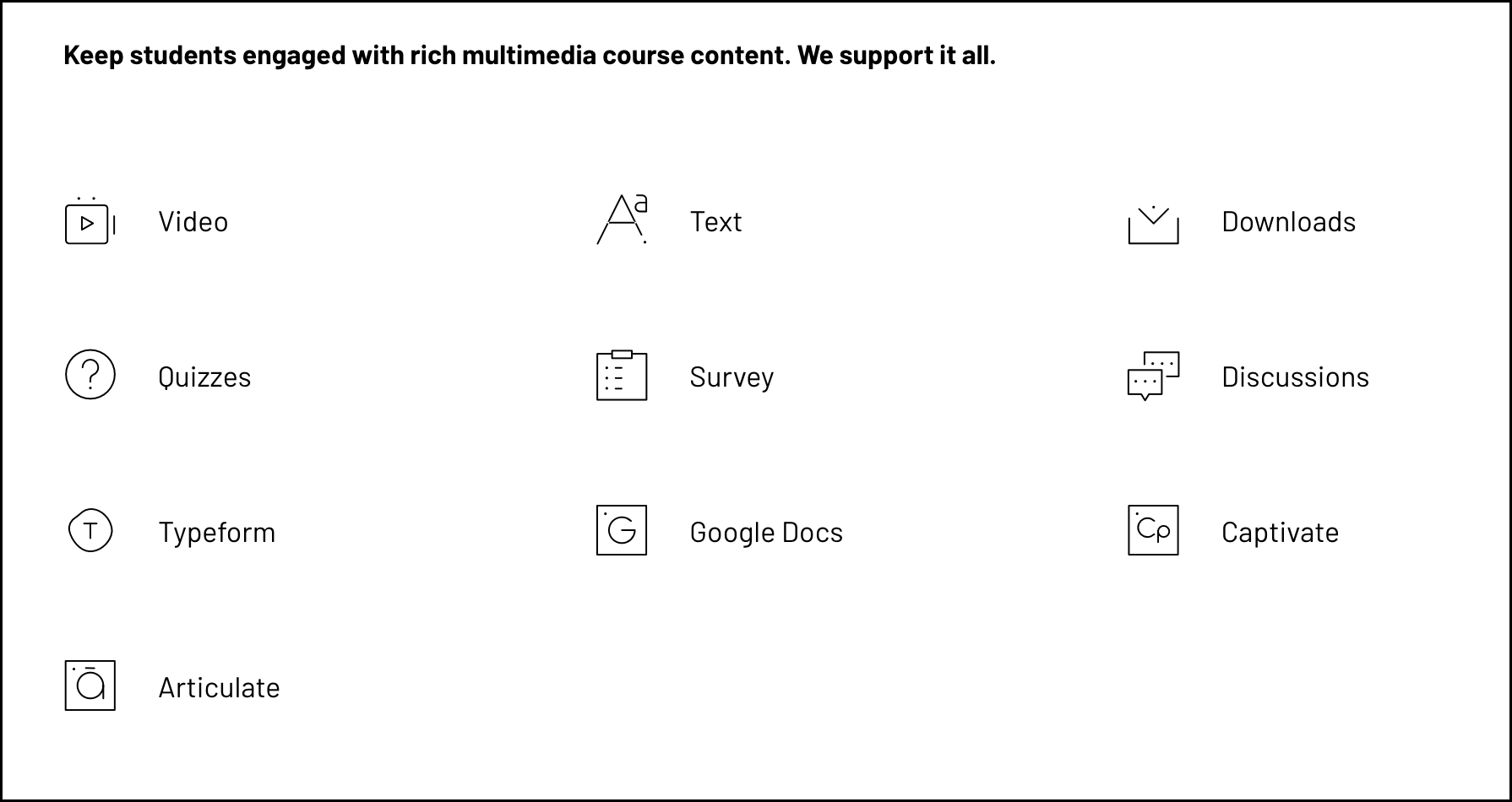
3. Do everything yourself with different tools
If you expect to sell your online courses to a limited number of students, and would welcome contact with them, then you can realistically manage the sales and delivery process yourself. This option isn’t for the faint hearted though. You’ll need an existing website, marketing channels, and tech stack.
Advantages and disadvantages of doing everything yourself
Advantages:
- Affordable
- Flexible in terms of what you sell and how you sell
- Connecting with your students can boost their satisfaction with the course
The downsides are:
- Need an existing website, marketing channels and tech stack
- Selling aboard can be harder in terms of tax and regulations
- Requires more of your time
What’s involved (an initial list)
Create your online course
If you’re experienced creating multi-media content then you’ll enjoy the flexibility of doing everything exactly how you want and using the best tools for the job. If you’re less experienced, then you might get fed up researching and learning to use various content creation tools.
Arrange payment for your online course
You’ll need to arrange some way to process payment for your course. Selling online is fairy easy with PayPal, Stripe, and so on. These options are reliable and support different currencies and payment methods. PayPal and Stripe both support subscription payments.
You’ll need to spend some time researching these options and deciding what suits you best (Do you need students to pay in instalments? Do you want to offer discounts? How do you want your checkout to look?)
Stripe offers your students the chance to pay per month:
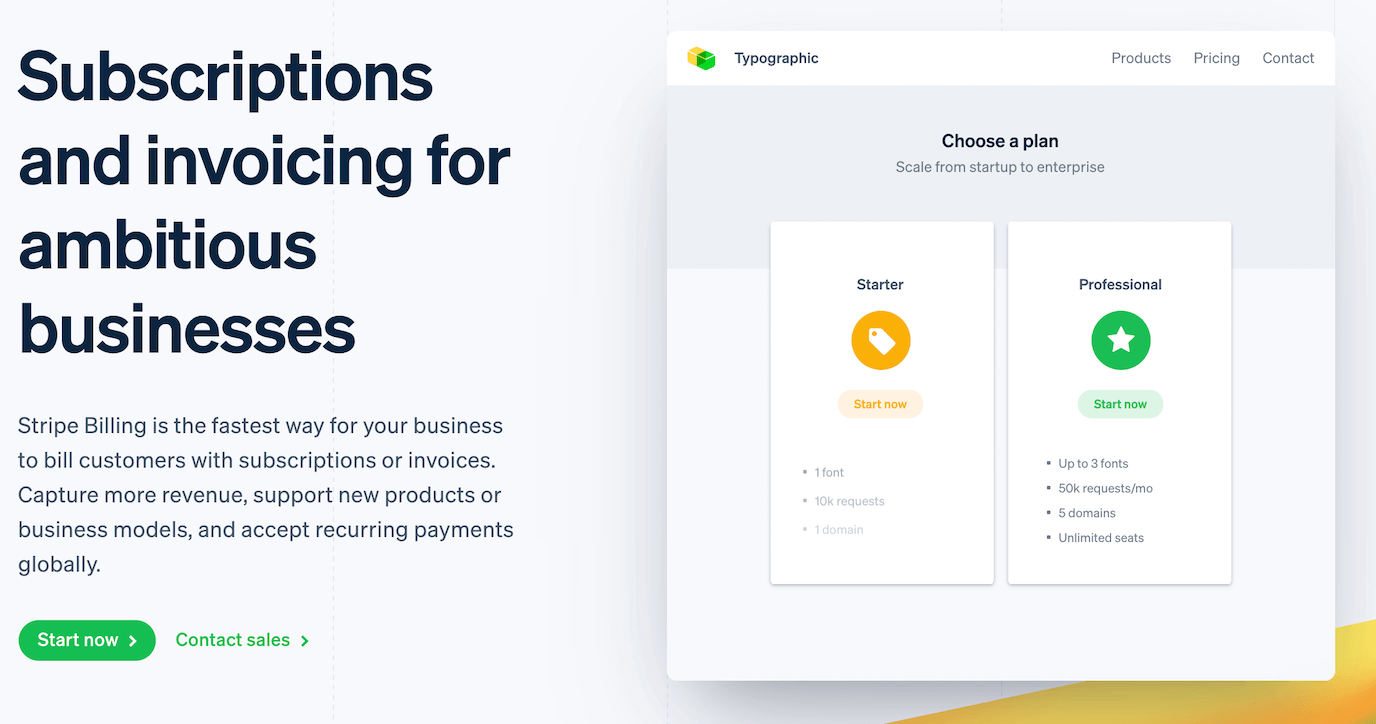
Arrange delivery of your online course
You’re going to find it harder to automate this process, although it’s not impossible (but people wouldn’t pay digital delivery providers if it was easy!).
A simpler option, if you don’t have all that many students, is to arrange manual delivery of your course. You could build this into your selling process as an opportunity for students to be in touch with you and ask questions. Sometimes, the ‘passive income’ approach can feel quite cold to students, who would value contact with the author of the course.
Depending on the size of your online course, there are various tools you can use to send it to students, ranging from Dropbox to WeTransfer and Filemail, which allows you to send files through an email or as a link.
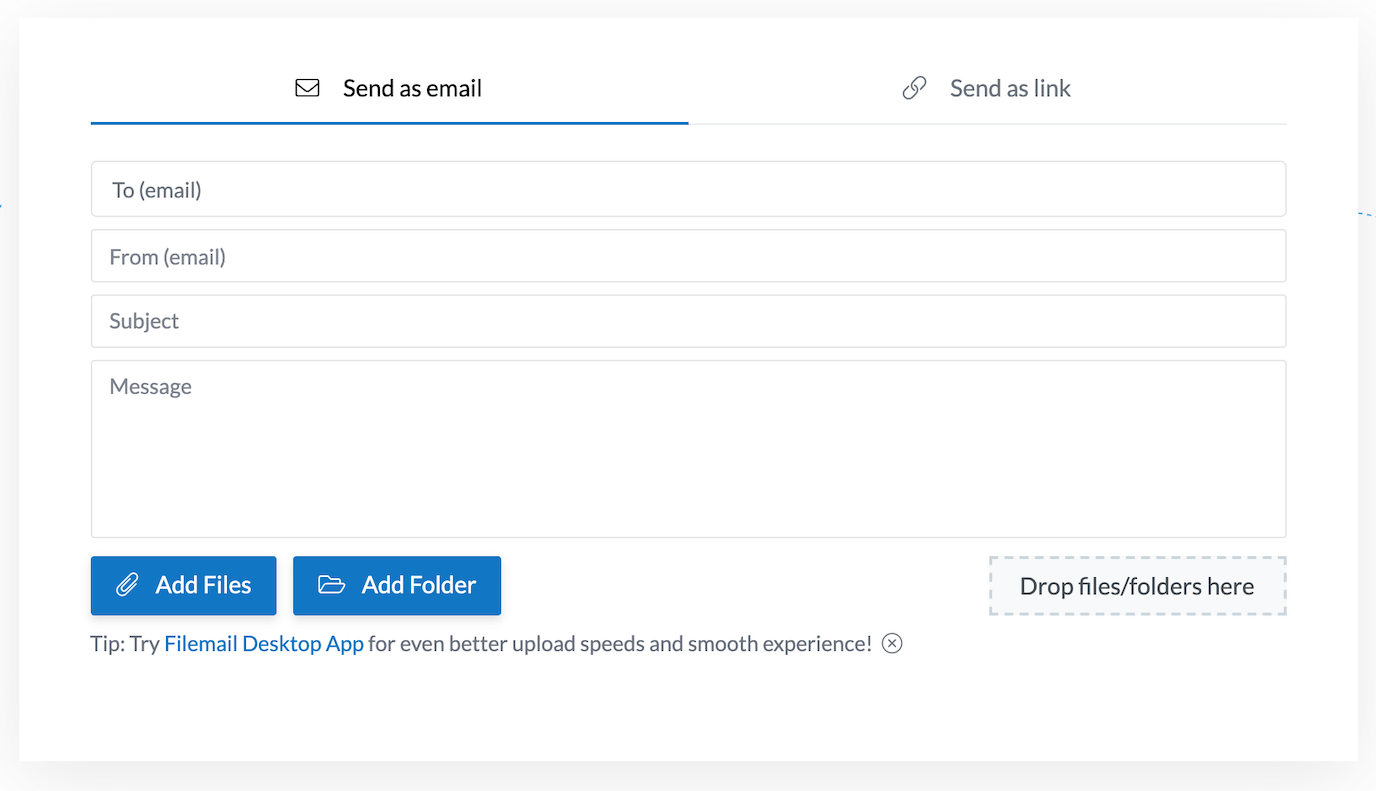
Sort out any add-ons
Do you want feedback from your students? Do you want to create a student community? Do you need to add a live element to your course? All of these requirements are possible with different, specialist tools. For example, Saber Feedback helps you collect instant feedback from your students, Discourse is a good community builder, while you could use Zoom to add a simple live element to your course.
4. What next?
Once you’ve decided on how you’re going to sell your online course, then start selling. It’s better to test your course with at least some students (preferably who pay for the course) than to keep refining it until it is ‘perfect’ in your opinion.
However, how can you objectively find out whether your course is the best it can be?
We’ve written a detailed article on how to improve your course, so you sell more. Take a look!
We cover how you can:
- Improve your online course with feedback
- Spot weak areas with a course content audit
- Reposition your online course to show your USP

